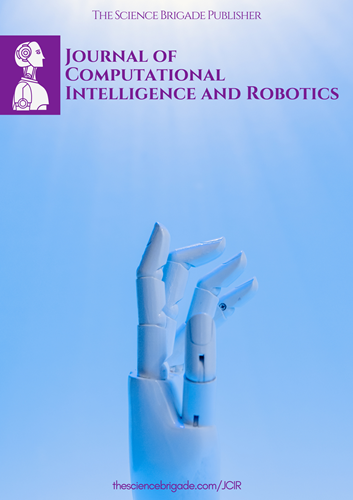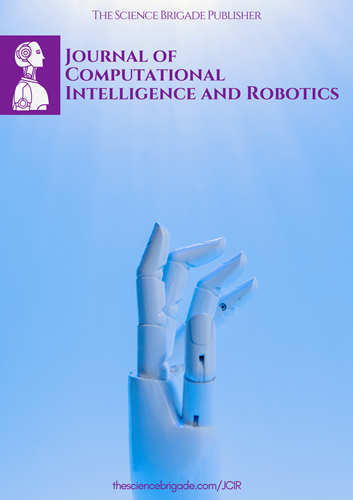The Role of Cross-Functional Collaboration in Digital Transformation
Keywords:
cross-functional collaboration, digital transformationAbstract
The rapid progression of digital transformation across industries has underscored the need for a robust and cohesive approach to organizational restructuring and technological adoption. However, the success of these transformative efforts is increasingly understood to be contingent upon effective cross-functional collaboration within organizations. This paper investigates the role of collaboration across diverse organizational functions—such as information technology (IT), human resources (HR), finance, operations, marketing, and research and development (R&D)—as a pivotal factor in driving successful digital transformation initiatives. Digital transformation, often aimed at integrating advanced digital technologies such as artificial intelligence, big data analytics, and cloud computing, involves profound shifts in organizational strategies, processes, and culture. In this context, cross-functional collaboration enables organizations to bridge siloed operational structures, facilitating the alignment of technological initiatives with core business objectives and enhancing decision-making processes.
The research explores the theoretical underpinnings of cross-functional collaboration, with particular attention to its role in fostering agility, innovation, and resilience within organizations. By examining the dynamics of team interactions, shared knowledge, and resource allocation across departments, this paper seeks to delineate the mechanisms through which cross-functional collaboration contributes to the achievement of digital transformation goals. One of the primary challenges in digital transformation lies in the inherent complexity and uncertainty surrounding the integration of novel technologies. Cross-functional teams mitigate this complexity by drawing on diverse expertise, thereby improving risk assessment, accelerating the innovation process, and ensuring that transformation initiatives are grounded in comprehensive, organization-wide insights. The paper further explores the synergy between IT and non-technical functions, such as HR and marketing, demonstrating how collaborative efforts in workforce training, change management, and customer-centric strategy formulation lead to improved digital readiness and organizational adaptability.
Empirical evidence gathered from case studies, surveys, and interviews with industry leaders supports the proposition that cross-functional collaboration is indispensable for digital transformation success. Analysis of organizations with high levels of inter-departmental collaboration reveals a statistically significant correlation between collaborative maturity and the outcomes of digital initiatives, including process efficiency, market responsiveness, and customer satisfaction. Additionally, the paper delves into the critical success factors that foster cross-functional collaboration, such as leadership commitment, clear communication channels, and the presence of integrative roles or dedicated teams responsible for overseeing collaborative efforts. Leadership commitment emerges as a cornerstone of collaboration, as top management endorsement not only signals the importance of digital transformation but also facilitates resource allocation and prioritization of cross-departmental objectives. Clear communication and integrative roles serve as enablers that promote mutual understanding among departments, reduce friction, and enhance the alignment of digital transformation objectives with broader organizational goals.
The paper also discusses the obstacles that inhibit effective cross-functional collaboration, particularly the persistence of organizational silos, cultural resistance, and misalignment of goals across departments. These barriers often impede the flow of information, hinder the identification of shared objectives, and exacerbate conflicts in resource allocation. To address these challenges, the research underscores the importance of cultivating a collaborative culture that values transparency, openness to change, and a shared commitment to digital transformation. Recommendations for overcoming these barriers include implementing formal governance structures, adopting collaborative technologies that facilitate real-time communication, and establishing metrics to monitor and evaluate collaboration outcomes. Furthermore, the study highlights the role of technological enablers, such as digital collaboration platforms and data-sharing tools, in streamlining cross-functional interactions and enabling seamless access to information across departments.
Through a comprehensive analysis of cross-functional collaboration’s impact on digital transformation, this paper contributes to the growing body of literature that underscores the need for an integrated, multidisciplinary approach to organizational change in the digital era. The findings provide valuable insights for organizational leaders, change managers, and digital transformation practitioners, emphasizing that the integration of digital technologies should not occur in isolation but must be accompanied by a collaborative, organization-wide commitment to transformation. The research concludes that cross-functional collaboration not only enhances the efficacy of digital transformation initiatives but also strengthens the organization’s overall adaptability, competitiveness, and long-term resilience in a rapidly evolving digital landscape.
Downloads
Downloads
Published
Issue
Section
License

This work is licensed under a Creative Commons Attribution-NonCommercial-ShareAlike 4.0 International License.
License Terms
Ownership and Licensing:
Authors of this research paper submitted to the journal owned and operated by The Science Brigade Group retain the copyright of their work while granting the journal certain rights. Authors maintain ownership of the copyright and have granted the journal a right of first publication. Simultaneously, authors agreed to license their research papers under the Creative Commons Attribution-NonCommercial-ShareAlike 4.0 International (CC BY-NC-SA 4.0) License.
License Permissions:
Under the CC BY-NC-SA 4.0 License, others are permitted to share and adapt the work, as long as proper attribution is given to the authors and acknowledgement is made of the initial publication in the Journal. This license allows for the broad dissemination and utilization of research papers.
Additional Distribution Arrangements:
Authors are free to enter into separate contractual arrangements for the non-exclusive distribution of the journal's published version of the work. This may include posting the work to institutional repositories, publishing it in journals or books, or other forms of dissemination. In such cases, authors are requested to acknowledge the initial publication of the work in this Journal.
Online Posting:
Authors are encouraged to share their work online, including in institutional repositories, disciplinary repositories, or on their personal websites. This permission applies both prior to and during the submission process to the Journal. Online sharing enhances the visibility and accessibility of the research papers.
Responsibility and Liability:
Authors are responsible for ensuring that their research papers do not infringe upon the copyright, privacy, or other rights of any third party. The Science Brigade Publishers disclaim any liability or responsibility for any copyright infringement or violation of third-party rights in the research papers.




